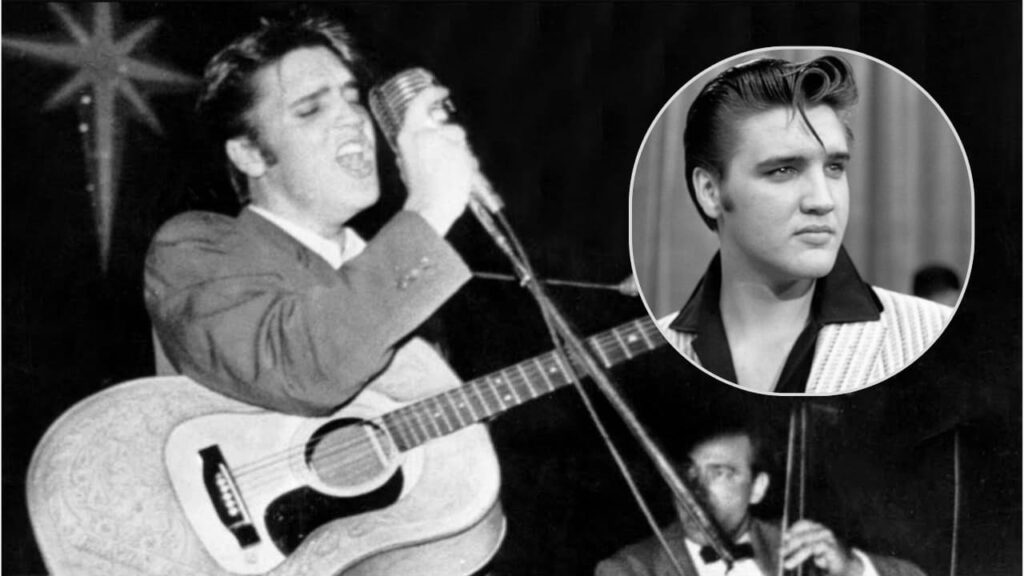
A Timeless Question Echoes Through the Ages
Ah, “Blowin’ in the Wind.” Just the title itself conjures images of a simpler time, a period when music wasn’t just entertainment but a vibrant, beating heart of social consciousness and profound reflection. When we speak of this song, it’s Bob Dylan’s voice that first comes to mind, his raw, unpolished delivery etching those eternal questions into the fabric of the 1960s. But then, as is so often the case in the grand tapestry of American music, a familiar, regal voice emerges from the shadows, adding a layer of unexpected depth and melancholy: that of Elvis Presley.
Now, for those of us who lived through those tumultuous years, the idea of Elvis Presley tackling a Bob Dylan protest anthem might seem, at first blush, a curious juxtaposition. Dylan was the voice of the counter-culture, the thoughtful poet-minstrel challenging authority and raising uncomfortable truths. Elvis, on the other hand, was the King, the swivel-hipped icon who had electrified a generation with rock and roll, but by the mid-60s, was often seen as more of a Hollywood crooner, churning out movie soundtracks rather than groundbreaking social commentary.
Yet, in 1966, Elvis Presley did indeed record a rendition of “Blowin’ in the Wind.” This wasn’t a commercial single release, mind you, nor did it climb the charts like so many of his earlier, more famous hits. Instead, it was a home recording, captured informally at his Rocca Place home in Hollywood. It wouldn’t see the light of day officially until much later, finally appearing on the expansive 1997 collection, “Platinum – A Life in Music.” This means that, at the time of its recording, it held no chart position; it was a private moment, a King engaging with a song that, in its essence, was far removed from the glitter and bombast of his public persona.
The story behind Elvis recording this particular track is less about a calculated career move and more about his genuine appreciation for meaningful music, even that which originated outside his usual sphere. While he never directly collaborated with Dylan, Elvis was known to admire certain contemporary artists and their material. This home recording, featuring Elvis himself on piano, accompanied by Charlie Hodge on piano, guitar, and vocals, and Red West and others on backing vocals, offers a rare glimpse into a more contemplative side of the King. It speaks to a man who, beneath the sequined jumpsuits and movie sets, possessed a soul capable of grappling with the profound questions “Blowin’ in the Wind” so elegantly poses. He would also later perform other Dylan songs in his live shows during the 70s, such as “Don’t Think Twice” and “I Shall Be Released,” further illustrating his respect for Dylan’s songwriting.
The meaning of “Blowin’ in the Wind” itself is a timeless rumination on peace, war, freedom, and the pervasive silence of society in the face of injustice. Dylan’s rhetorical questions, like “How many roads must a man walk down / Before you call him a man?” or “How many times must the cannonballs fly / Before they’re forever banned?”, were sharp indictments of the status quo during the Civil Rights movement and the Vietnam War era. The iconic refrain, “The answer, my friend, is blowin’ in the wind,” is often interpreted in two powerful ways: either the answers are so blindingly obvious that they are all around us, like the invisible, ever-present wind, or they are intangible, elusive, yet constantly in motion, waiting to be grasped. For Elvis to lend his voice to such a piece, even in a private setting, suggests an understanding of its weight and its urgent plea for human decency and awareness.
Hearing Elvis’s take on “Blowin’ in the Wind” today, decades removed from its quiet creation, is to be transported to a reflective space. It’s not the thunderous rock and roll that defined his early career, nor the bombastic showmanship of his later years. Instead, it’s a stripped-down, earnest performance, perhaps colored by the personal complexities and struggles that were beginning to shadow his life. It reminds us that even the most iconic figures, the ones we often pigeonhole into neat categories, harbored layers of thought and emotion that transcended their public image. It’s a poignant reminder that the wind, indeed, carries many answers, and sometimes, even the King himself paused to listen.